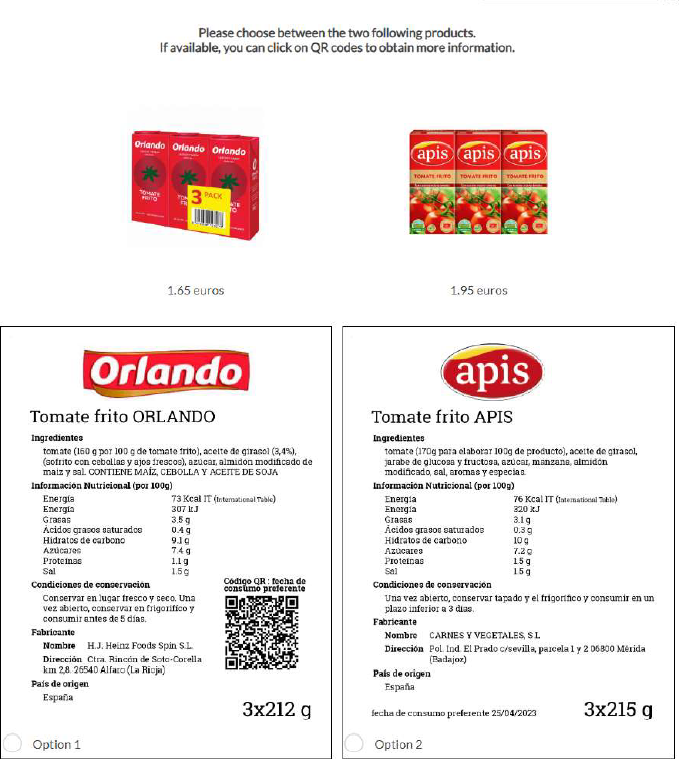Context
In 2020, the European Commission adopted the Farm to Fork (F2F) Strategy for a fair, healthy, and environmentally friendly food system. One of its goals is to provide European consumers with clear and easily accessible information to facilitate their choice of a healthy and sustainable diets. There is, however, limited space on packaging labels that are printed or affixed to products, and there is a variety of new information consumers would potentially need to access. This information relates to, for example, the environmental impact of the food they consume, the ethical standards of the producer, or the processing the food went through.
This is why we need to explore ways to provide information to consumers through other means, such as smartphones by scanning QR codes on products.
Goals
Against this background, it is important to understand how consumers behave with respect to QR codes and the information provided through them. Specifically, we want to know whether consumers are willing and able to use, understand and take account of food information provided off-labels (e.g. through online means), and how off-label compares with on-label information in those respects.
Methods
We run an experiment that resembles the choice situation in a supermarket. The experiment was conducted online with 3420 participants from three Member States of the European Union (Spain, Germany, and Bulgaria). The sample was stratified in terms of age, gender, regions, place of residence (rural vs. urban) and education level. Participants in our experiment made choices within pairs of alternative products. We varied whether those products had all information on the packaging, or some of the information could be accessed only by scanning a QR code. We measured whether consumers systematically avoid products with QR codes, how often they scanned those QR codes, and whether they remembered and took account of the information that was provided via those QR codes.
Expected outcomes
This study provides insights into whether consumers are ready and able to use digital means of accessing food information and addresses the scarcity of studies addressing consumers’ preference for and ability to use and understand on-package vs. digitally provided information. The study also focuses on categories of consumers who could be potentially adversely impacted by the introduction of such other means, such as those who are digitally excluded or find it hard to process wider ranges of food information coming from different sources.
Results & outputs
We present an experiment to evaluate the impact of providing digital access to food information via QR codes. We measure consumers’ willingness to access digital food information by scanning QR codes on paper labels, and how this affects their knowledge about food products. The experiment was conducted online with 3420 participants from three Member States of the European Union (Spain, Germany, and Bulgaria). The sample was stratified in terms of age, gender, regions, place of residence (rural vs. urban) and education level. Participants made a number of choices between pairs of food products across a wide range of food categories. We varied the mode of display of some of the food information: it was either available directly (“paper label”) or only after the participants clicked on a QR code (“hybrid label”). We found that participants were as likely to choose food products with hybrid labels as those with paper labels. However, they were unlikely to access digital food information. As many as 37% of the participants never scanned any QR codes. Only 4% scanned all of them. On average, QR codes were scanned 24% of the time. Furthermore, products with hybrid labels slowed choice down and reduced the accuracy of what consumers knew about the product. We conclude that providing food information via QR codes rather than on paper labels has a negative impact on consumers.
More information
| Coordinators | Alexia GAUDEUL |
| Participants | Michal KRAWCZYK |
| Geographic coverage | GermanySpainBulgaria |
| Originally Published | Last Updated | 15 May 2023 | 10 Jul 2024 |
| Related links | |
| Knowledge service | Metadata | Behavioural insights | Behavioural insights for consumer protection |
| Digital Europa Thesaurus (DET) | consumer behaviourconsumer protectionconsumer policydigital divideaccess to informationnutritionhealth policy |
Recommended reading
Share this page

